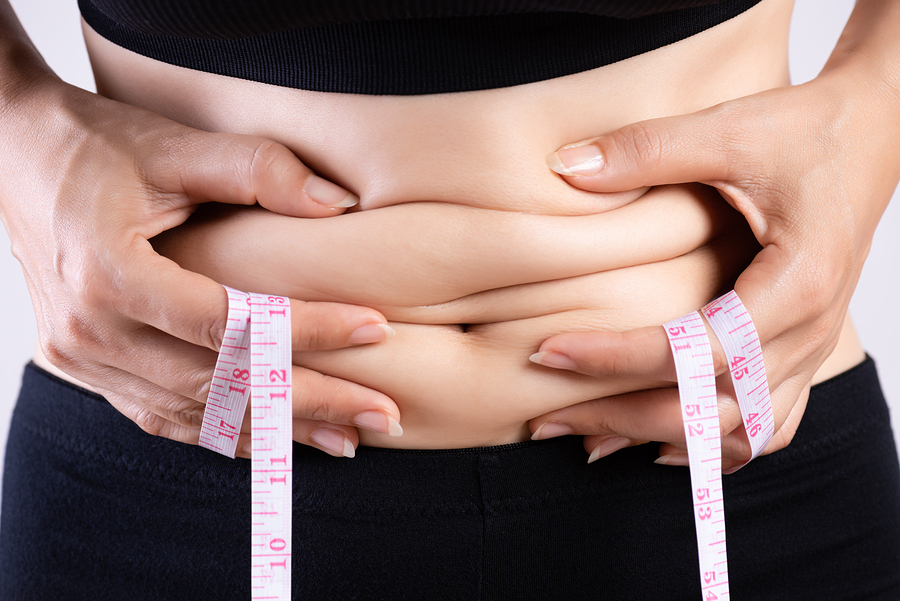The science behind fat loss and how to understand it
What is the secret to losing fat? Tom Rothwell, AXA PPP healthcare lead physiologist explains the science.
“The answer to fat loss doesn’t lie in detox pills or teatoxing, in fasting or a fad diet but it does lie in understanding the basic science behind how our bodies work. Once we are educated on the topic of fat loss then we become empowered to make positive changes.”
Using a tape measure
Since our weight fluctuates throughout the day, weighing ourselves is not always the best way to monitor fat loss or gain.
“There are numerous reasons why weight fluctuates, this can be due to hormones, how much carbohydrate we’ve eaten, what we’ve eaten the previous day, how much salt we’ve consumed, how much water we’ve drunk to name a few,” says Tom. “It is also potentially damaging if we start to become obsessed with the numbers written on the scales. A better way is to undertake a fat percentage test or simply to invest in a tape measure.”
Using your belly button as a reference point, measure around your waist. Then go on to take measurements of your thigh or upper arm too. It is important to measure your waist in particular as a larger waist can indicate greater stores of fat around the stomach (visceral fat). Too much visceral fat is linked with an increased risk of cardiovascular disease and diabetes, so by tracking your waist measurement you are monitoring your health on the inside as well as how you look on the outside.
Another great indicator of how you are doing is to take notice of how your clothes feel on you, including underwear and belt sizes.
The science explained
“Above all else, when it comes to fat loss, what you need to have is a calorie deficit,” says Tom. “This is when we expend more energy than we intake.”
Calories we intake through eating and drinking are called ‘calories in’. ‘Calories out’ are made up of three things:
- The energy our bodies need for all automatic and natural processes such as breathing is called the Basal Metabolic Rate or BMR
- The energy we expend through moving or exercising is called Physical Activity Expenditure or PAE
- The energy our bodies need to digest, absorb and metabolise food is called the Thermic Effect of Food or TEF.
The government guidelines for maintaining a healthy weight in adults is that women should consume no more than 2,000 calories per day and men should consume no more than 2,500 calories per day. However, this a very rough guide as it will depend enormously on how active you are – on your PAE.
A calorie deficit is more easily achieved by altering how much we eat rather than increasing our exercise. In other words, if we have a bad diet, we should improve the diet first instead of trying to compensate by exercising more.
Exercise obviously has a beneficial role to play for our general health such as improved mood, heart and brain health, self-esteem and increased body confidence and does play its part in weight loss but reducing calorie consumption is ultimately the key.
How to achieve a calorie deficit?
The general rule of thumb is to aim to create a deficit of around 500 calories a day, but it really does depend on the person – what works for a friend may not work for you. There are, however, two fundamentals that we should bear in mind when thinking about the choices we’re making:
- Food should be enjoyed so it’s no good trying to eat something you feel you should eat as you will not stick to it
- Are you creating a calorie deficit
Traditionally we have been taught that to lose fat we can’t eat food that we enjoy, but this is simply not true. We can include these types of food in our diet as long as we are still creating a calorie deficit. This way of eating will help us in the long term as we are not denying ourselves the things we enjoy so we are less likely to binge eat.
Controlling portion sizes and keeping a food diary are two great ways to keep an eye on how much we are eating. We tend to underestimate how many calories we eat every day so keep a log is useful to recognise where we could make better food choices and tweak our calorie intake.
So should we be aiming to drop 500 calories a day? This depends on how much you want to lose, your age, metabolism and medical condition. We are all different so noting down energy levels, mood, tiredness and so on, alongside calorie intake can help to monitor if the deficit is right for you. If you find that your weight or waist measurements are not going down then you are not in a calorie deficit. You will then need to re-assess the amount of daily calories you are consuming.
Losing fat can take time, so be patient. Eat a healthy, balanced and nourishing diet, try not to skip meals, remember to move your body and enjoy the journey.
The key to eating a balanced diet is to ensure it works around you and your life – if you don’t enjoy it then you won’t stick at it!
Take a look at some of our recipes and articles in our diet and exercise section to give inspire and motivate you.
Good luck!
Disclaimer
All content on Silversurfers.com is provided for general information only, and should not be treated at all as a substitute for the medical advice of your own doctor or any other health care professional. Silversurfers will not be responsible or liable for any diagnosis made by a user based on the content on www.silversurfers.com and we are also not liable for the content of any external websites or links from or to Silversurfers to any other websites. Please always consult your own doctor if you’re in any way concerned about any aspect of your health.
Melina - Assistant Editor
Latest posts by Melina - Assistant Editor (see all)
- Banana bread with SunGold kiwis - February 20, 2025
- A tribute to Bob Marley - February 4, 2025
- Going to Work on an Egg! - January 29, 2025
- The Very Best of Petula Clark - January 14, 2025
- 50 Years of Coat Trends - January 12, 2025




















